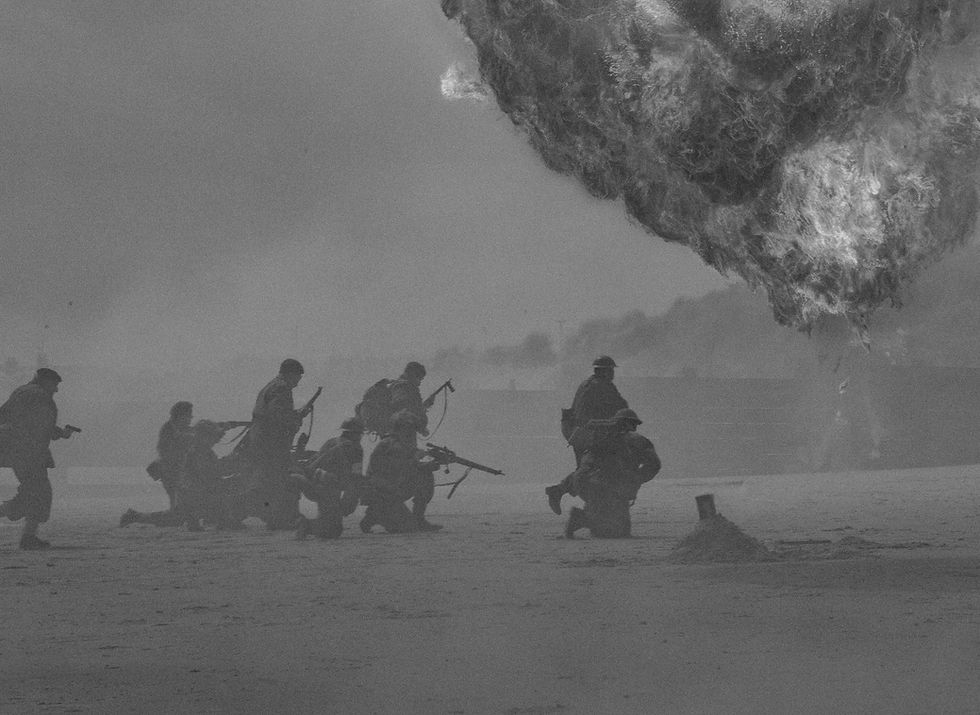Russia-Ukraine War
- Shreya Giri
- Jan 29, 2024
- 6 min read
The Russo-Ukrainian War is an ongoing international war involving Russia and Ukraine that began in February 2014. Following Ukraine's Revolution of Dignity, Russia annexed Crimea and backed pro-Russian rebels battling the Ukrainian military in the Donbas conflict. The first eight years of combat were also marked by maritime mishaps, cyberwarfare, and rising political tensions. In February 2022, Russia started a full-fledged invasion of Ukraine, conquering more of the country.

The Euromaidan protests in early 2014 sparked the Revolution of Dignity, which ousted Ukraine's pro-Russian president, Viktor Yanukovych. Shortly after, pro-Russian protests broke out in eastern and southern Ukraine. Simultaneously, unmarked Russian troops marched into Ukraine's Crimea, seizing government buildings, vital areas, and infrastructure. Russia quickly annexed Crimea following a contentious referendum.
In April 2014, Russian-backed separatist troops seized government facilities in Ukraine's eastern Donbas area, declaring the Donetsk People's Republic (DPR) and the Luhansk People's Republic (LPR) sovereign nations, sparking the Donbas conflict. Russia provided significant but covert support to the separatists, and Ukrainian attempts to reclaim separatist-held territory were unsuccessful. Despite Russian denials, Russian forces participated in the conflict.
Russia and Ukraine signed the Minsk II agreements in February 2015 to cease the conflict, but they were never completely implemented in the years since. The Donbas war became a brutal but static struggle between Ukraine and Russian and separatist troops, with numerous brief ceasefires but no long-term peace and few changes in territorial control.
Following the Minsk agreements, the war settled into static trench warfare along the agreed-upon line of contact, with little change in territorial control. Artillery duels, special forces operations, and trench warfare dominated the fight. Hostilities never stopped for an extended length of time, but remained at a low level despite several ceasefire attempts.
Minor skirmishes along the line of contact continued in the months following Debaltseve's collapse, but there were no territorial changes. Both sides began strengthening their positions by constructing trenches, bunkers, and tunnels, transforming the fight into static trench warfare.Some referred to the relatively static battle as "frozen," although Russia never achieved this because fighting never halted. Between 2014 and 2022, 29 ceasefires were agreed upon, each of which would last indefinitely. However, none of them lived more than two weeks.
US and international officials continued to report an active Russian military presence in eastern Ukraine, especially the Debaltseve area. In 2015, Russian separatist forces were believed to be roughly 36,000 troops (compared to 34,000 Ukrainians), with 8,500-10,000 Russian servicemen. In addition, approximately 1,000 GRU forces were working in the area. Another estimate from 2015 stated that Ukrainian soldiers overpowered Russian forces 40,000 to 20,000. In 2017, one Ukrainian soldier was killed in conflict every three days, with an estimated 6,000 Russian and 40,000 separatist troops in the region.

Local Russian media discussed cases of murdered and injured Russian military. Donbas recruitment was carried out openly through veteran and paramilitary organisations. Vladimir Yefimov, the leader of one such organisation, described how the process worked in the Ural region. The organisation predominantly recruited army veterans, although it also hired police officers, firefighters, and others with military backgrounds.
The anticipated cost of equipping one volunteer was 350,000 rubles (about $6500), with a monthly stipend of 60,000 to 240,000 rubles. The trainees only acquired firearms once they arrived in the fighting zone. Russian troops frequently disguised themselves as Red Cross personnel.
Igor Trunov, the head of the Russian Red Cross in Moscow, denounced the convoys, claiming they hampered humanitarian aid distribution.Russia refuses to allow the OSCE to expand their mission beyond two border points. To dodge Russian mercenary regulations, the volunteers were given a document indicating that their participation was limited to "offering humanitarian help". According to Russia's anti-mercenary legislation, a mercenary is someone who "takes part [in fighting] with aims counter to the interests of the Russian Federation".
More than 110 Ukrainian servicemen were killed during the war in 2019. Volodymyr Zelenskyy, the newly elected Ukrainian president, assumed office in May 2019, promising to put an end to the war in Donbas. In December 2019, Ukraine and pro-Russian separatists started exchanging prisoners of battle. Around 200 inmates were exchanged on December 29, 2019. Ukrainian authorities said that 50 Ukrainian soldiers were killed in 2020. Since 2019, Russia has issued more than 650,000 internal Russian passports to Ukrainians.
Russia began a large military buildup near the border in March and April 2021, followed by a second buildup in Russia and Belarus from October 2021 to February 2022. The Russian government constantly denied having preparations to attack Ukraine.
Following Russian denials, the United States disclosed intelligence regarding Russian invasion intentions in early December 2021, including satellite photos of Russian troops and equipment near the border. The intelligence service provided a Russian list of critical sites and individuals to be assassinated or neutralised. The US issued several assessments that precisely predicted the invasion preparations.

The Russian invasion of Ukraine began on the morning of February 24, 2022, when Putin declared a "special military operation" to "demilitarise and denazify" Ukraine. Minutes thereafter, missiles and airstrikes landed across Ukraine, including Kyiv, followed by a massive ground invasion on many fronts. Zelenskyy proclaimed martial law and ordered a general mobilisation of all male Ukrainian nationals aged 18 to 60, who were barred from leaving the country.
Russian attacks began on three fronts: a northern front from Belarus to Kyiv, a southern front from Crimea, and a south-eastern front from Luhansk and Donetsk towards Kharkiv. Russia's progress on the northern front faltered in March due to significant losses and strong Ukrainian opposition around Kyiv, and its troops retreated by April. On April 8, Russia deployed its soldiers in southern and eastern Ukraine under the direction of General Aleksandr Dvornikov, while some units removed from the north were redeployed to the Donbas.
On April 19, Russia started a new onslaught along a 500-kilometer (300-mile) front running from Kharkiv to Donetsk and Luhansk. By May 13, Ukraine's counter-offensive had driven Russian forces back near Kharkiv. Following a lengthy siege of the Azovstal steel complex, Russian soldiers captured Mariupol on May 20. Russian forces continued to bomb military and civilian targets far from the front lines.
The war resulted in the worst refugee and humanitarian catastrophe in Europe since the Yugoslav Wars of the 1990s; the United Nations labelled it as the fastest-growing such crisis since WWII. The UN claimed that over a million refugees had fled Ukraine in the first week of the invasion; by September 24, this figure had risen to over 7,405,590, a decrease from over eight million due to some refugees returning.
Ukrainian forces launched counteroffensives in the south in August and the northeast in September. On September 30, Russia annexed four oblasts of Ukraine that it had partially seized during the war. The majority of the world's countries ignored and opposed this annexation. After Putin indicated that he would begin conscription from the 300,000 citizens with military training, as well as the pool of approximately 25 million Russians who could be eligible for conscription, one-way tickets out of the country were nearly or totally booked.

In September, Ukraine's northeast assault successfully regained the majority of Kharkiv Oblast. During the southern counteroffensive, Ukraine retook Kherson in November, and Russian soldiers withdrew to the east bank of the Dnieper River.
The invasion was widely denounced as an act of aggression. A resolution passed by the United Nations General Assembly called for the complete withdrawal of Russian forces, while the International Court of Justice ordered Russia to cease military activities and the Council of Europe expelled Russia.
Many countries implemented new sanctions, affecting Russia's and the world's economies, while also providing humanitarian and military aid to Ukraine. In September 2022, Putin passed legislation that would punish anyone who opposes conscription with a 10-year prison sentence, sparking an international movement to grant shelter to Russians avoiding conscription.
By August 2023, the total number of Russian and Ukrainian soldiers killed or wounded during Russia's invasion of Ukraine had reached over 500,000. Over 10,000 civilians were killed during Russia's invasion of Ukraine. According to a declassified US intelligence estimate, as of December 2023, Russia has lost 315,000 of the 360,000 troops that comprised Russia's pre-invasion ground army, and 2,200 of the 3,500 tanks. By August 2023, the total number of Russian and Ukrainian soldiers killed or wounded during Russia's invasion of Ukraine had reached over 500,000. More than 10,000 civilians were killed during Russia's invasion of Ukraine.

About the Author
Shreya Giri is a talented SEO content writer with a unique flair for captivating readers. With a bachelor's degree in geography, her passion for crafting exceptional content shines through in every word she writes. Shreya's expertise lies in her ability to seamlessly blend language and storytelling, effortlessly capturing the attention of her audience.
She is currently pursuing a Master's degree in geography and has a remarkable talent for transforming intricate concepts into captivating narratives that have a lasting impact. With Shreya, you can expect excellent, captivating content that will keep you engaged from beginning to end.
You can connect with her through-
My-Lekh profile- lekh.com/profile/shreyagiri06/profile LinkedIn profile- https://www.linkedin.com/in/shreya-giri-a0a607265
Email- shreyagiri06@gmail.com





Comments